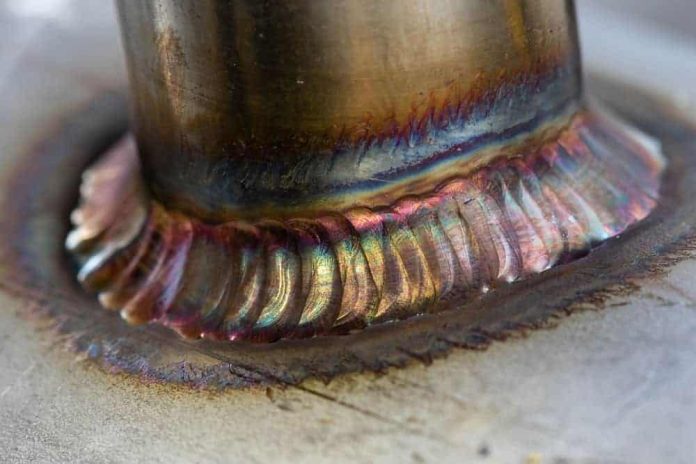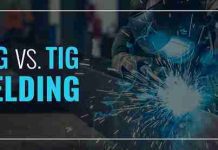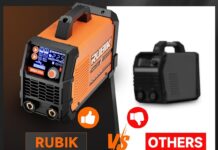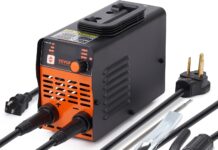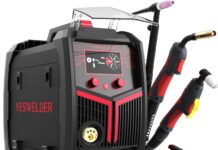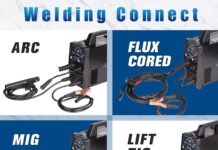Have you ever wondered how to achieve a good weld penetration? In this article, we will explore the key factors that contribute to successful weld penetration, ensuring solid and durable welds. From selecting the correct welding technique to choosing the proper welding parameters, we will provide tips and techniques to help you achieve optimal weld penetration. So, whether you are a beginner or an experienced welder, read on to discover the secrets behind obtaining a good weld penetration.
Factors Affecting Weld Penetration
Weld penetration is a crucial aspect of the welding process as it determines the strength and integrity of the weld joint. Various factors influence the depth of weld penetration, and understanding them is essential for achieving consistently high-quality welds. In this article, we will explore the key factors that affect weld penetration and provide valuable insights into optimizing each variable to achieve desirable results.
Voltage and Current Settings
The voltage and current settings are vital in determining the weld penetration. These settings directly affect the heat input and can significantly impact penetration depth. To determine the optimal voltage and current settings, it is essential to consider factors such as material thickness, joint design, and electrode diameter. Through careful experimentation and adjustment, welders can find the ideal combination of voltage and current that ensures proper weld penetration.
Adjusting the voltage and current levels can have different effects on weld penetration. Higher settings may increase the heat input, resulting in deeper penetration. On the other hand, lower settings may cause insufficient penetration, leading to weak welds. It is essential to strike a balance and find the sweet spot where the voltage and current settings maximize penetration while avoiding any potential issues, such as overheating or excessive weld distortion.
Electrode Diameter and Type
The choice of electrode diameter and type is another critical factor influencing weld penetration. Electrodes are available in various sizes and materials, and selecting the right one is crucial for achieving the desired penetration. Thicker electrodes generally produce deeper penetrations, whereas smaller diameter electrodes are suitable for thinner materials.
Furthermore, the electrode type can also impact weld penetration. Different electrode coatings have varying properties, such as generating deeper or narrower weld pools. It is essential to select the electrode type that complements the base metal and joint design, ensuring optimal weld penetration.
Joint Design and Preparation
The design and preparation of the joint have a significant impact on weld penetration. It is essential to choose the appropriate joint type that best suits the application and desired weld penetration. Common joint types include butt joints, lap joints, and T-joints.
Proper fit-up and alignment are crucial for achieving adequate weld penetration. Gaps or misalignment can result in incomplete fusion and weak welds. Therefore, ensuring precise fit-up and alignment is essential.
Edge preparation is another vital aspect of joint preparation that affects weld penetration. Beveling or chamfering the edges of the joint can improve penetration by allowing better access to the weld pool. However, it is essential to strike a balance, as excessive beveling can lead to potential issues, such as excessive burn-through or distortion.
Welding Technique
The welding technique also plays a significant role in achieving optimal weld penetration. Several critical aspects of the welding technique can affect penetration levels.
Arc length, or the distance between the electrode and the workpiece, is a crucial factor in weld penetration. A shorter arc length generally results in deeper penetration, but it is essential to maintain a proper balance to avoid issues such as spatter or instability.
The travel angle, or the angle between the electrode and the welding direction, can also impact weld penetration. Adjusting the travel angle allows for better control of the weld pool and can result in improved penetration.
Weaving is another technique that can influence penetration. By moving the electrode in a zigzag or circular motion, the width of the weld pool can be increased, potentially leading to deeper penetration.
The direction of travel, whether pushing or pulling the electrode, can also affect penetration. Each method has advantages and disadvantages, and the choice should be based on factors such as joint type, electrode type, and personal preference.
Lastly, the torch or gun angle can impact weld penetration. Holding the torch at the correct angle ensures proper heat delivery and allows for better control over the weld pool.
Gas Shielding
Gas shielding is crucial in many welding processes, such as TIG (Tungsten Inert Gas) and MIG (Metal Inert Gas) welding. The choice of appropriate gas, along with proper flow rate and gas cup size and shape, can significantly impact weld penetration.
Choosing the suitable shielding gas is vital as it influences the weld pool characteristics and the overall stability of the welding process. Different gases have varying properties that can affect the depth of penetration. It is essential to consider factors such as material type, joint design, and welding technique when selecting the appropriate gas.
Maintaining the proper flow rate of the shielding gas is equally essential. Insufficient gas flow can result in inadequate shielding, leading to shallow penetration or potential defects. On the other hand, excessive gas flow can displace the shielding gas, causing oxidation or other issues that may hinder penetration.
The size and shape of the gas cup used in TIG welding can also have an impact. A smaller cup size may offer better access to complex joint geometries, while a larger one could provide more consistent gas coverage and better shielding.
Base Metal Type and Thickness
The base metal type and thickness directly influence the weld penetration. Different metals have varying thermal conductivities and melting points, which affect the heat transfer during welding. It is essential to understand the characteristics of the base metal and choose appropriate welding parameters and filler metals to achieve the desired weld penetration.
Matching the filler metal to the base metal is crucial to ensure proper fusion and penetration. Using compatible filler metals helps maintain the appropriate composition and mechanical properties in the weld joint, resulting in improved penetration and overall weld quality.
The thickness of the base metal also plays a role in weld penetration. Thicker materials require higher heat input and longer arc duration to penetrate adequately. Conversely, thinner materials may require lower heat input to avoid excessive melt-through or distortion.
Travel Speed
The travel speed, or the rate at which the welding torch or electrode moves along the joint, can influence weld penetration. The optimal travel speed depends on various factors such as joint design, material thickness, and welding technique.
Finding the right travel speed is crucial as it affects the heat input and the time available for the weld pool to solidify. A proper travel speed ensures sufficient penetration and proper fusion. Too slow speed can result in excessive heat input, leading to burn-through or distortion, while too fast may result in insufficient penetration.
Welding Position
The welding position, whether flat or horizontal, vertical, or overhead, can also affect weld penetration. Different positions present unique challenges and require adjustments in welding techniques and parameters to achieve the desired penetration.
In the flat or horizontal position, gravity does not significantly affect penetration. It is generally easier to achieve adequate penetration in these positions.
The vertical position poses challenges due to the downward flow of molten metal. Proper techniques, such as employing a downward or uphill welding technique, can help ensure sufficient penetration. Adjustments in parameters such as voltage and travel speed may also be necessary.
The overhead position is particularly challenging, as gravity works against the weld pool and can lead to shallow penetration. Careful control of parameters, such as using smaller electrodes, higher currents, or slower travel speeds, may be necessary to achieve the desired penetration.
Preheating
The preheating of the base metal before welding can also impact weld penetration. Preheating involves heating the base metal to a specific temperature range before initiating the welding process. This technique is particularly beneficial for thick materials or materials prone to cracking, such as certain steels.
Preheating helps reduce thermal gradients, stress concentrations, and the risk of hydrogen-induced cracking. By ensuring a more uniform temperature distribution, preheating can promote proper weld penetration and reduce the likelihood of defects.
Post-Weld Heat Treatment
Post-weld heat treatment is an additional process that can affect weld penetration. Heat treatment involves subjecting the welded joint to a controlled temperature and time cycle. This process can relieve residual stresses, improve mechanical properties, and enhance weld penetration.
The specific heat treatment method employed depends on material type, joint design, and desired outcomes. Standard heat treatment methods include annealing, stress relieving, and tempering. By carefully selecting and implementing post-weld heat treatment, welders can optimize penetration and overall weld quality.
In conclusion, achieving good weld penetration requires a thorough understanding and optimization of various factors. By adjusting the voltage and current settings, selecting the appropriate electrode diameter and type, designing and preparing joints meticulously, employing proper welding techniques, ensuring adequate gas shielding, considering the base metal type and thickness, controlling travel speed, adapting to welding positions, employing preheating techniques, and utilizing post-weld heat treatment, welders can achieve desired weld penetration levels and produce robust, reliable, and high-quality welds.


